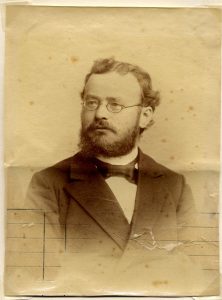Edited by Robert Lorenz

“The Statistics of Lusatian Sorbs” (Budyšin/Bautzen, 1886) by Arnošt Muka is among the major texts of Sorbian academic journalism in the 19th century. This work of Muka – who is among the protagonists of the movement of Sorbian students – represents the beginning of Sorbian sociology and follows the tradition of older demographic and regional statistics. At the same time, it can be considered a sorabistic ethnic classic following Wilhelm Heinrich Riehl which has not found any place in the academic history of ethnic studies in the German-speaking world just because of its missing German translation.
By conducting this study Muka aimed at the development of a comprehensive statistic registration and a sociological as well as ethnic description of Sorbian people in Lusatia on the cusp of industrialisation. However, his book is also a minority-related political polemic as well as a pedagogic treatise about the neglects or public obstruction by German authorities to the passing-on of Sorbian in churches and schools at that time.
Muka, focusing on Sorbian culture, joins the conservative and sceptic tone of the ethnic mainstream of his time. In his view, Sorbian life only seems possible in closed rural farming societies which are largely isolated from industrialisation, immigration and professional mobility and remain in the pastoral custody of the church. German factories and life in the city are different worlds to him. In his definition of Sorbian identity according to the ability to speak Sorbian he basically accepts that outsiders can join this idealised and – as he puts it – endangered rural Sorbian world.
Here you can find the German translation of the statistics.
Supporting texts:
Zur Konzeption von Arnošt Mukas „Statistika łužiskich Serbow“
Sorbisches Volk und Sorbische Kultur in Arnošt Mukas „Statistika łužiskich Serbow“
Zur Rezeption und Wirkungsgeschichte der „Statistika łužiskich Serbow“